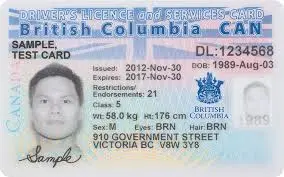Canada Driving License Types, Navigating the roads of Canada requires a valid driving license, but with different types available, it can be confusing to know which one you need. Each province and territory in Canada has its own licensing system, but there are some common types of driving licenses across the country. This blog post will explore the various types of driving licenses in Canada, helping you understand which one is right for you.
1. Class G License
The Class G license is the most common type of full, unrestricted license in Canada, particularly in Ontario. To obtain a Class G license, drivers typically go through a graduated licensing system. This process includes:
- G1 License: The first step allows new drivers to practice under certain conditions, such as driving with a fully licensed driver and avoiding high-speed highways.
- G2 License: After holding a G1 license for at least 12 months (or 8 months if you complete a driver education program), you can take the G2 road test. A G2 license allows you to drive independently, but there are still some restrictions, especially regarding the number of passengers allowed during the first year.
- Full G License: After holding a G2 for 12 months, drivers can take the final road test to obtain a full G license, which comes with no restrictions.
2. Class M License
The Class M license is designated for motorcycle riders in Canada. Similar to the Class G license, the process usually involves a graduated licensing system:
- M1 License: New motorcycle riders start with an M1 license, which has restrictions such as no riding at night and not carrying passengers.
- M2 License: After holding an M1 for at least 60 days and passing a road test, riders can obtain an M2 license, allowing them to ride independently with fewer restrictions.
- Full M License: After holding an M2 for at least 18 months, riders can take the final road test for a full M license, granting them unrestricted access to all types of motorcycles.
3. Class D License
Class D licenses are typically for driving larger vehicles, including trucks. This license allows individuals to operate vehicles with a gross vehicle weight rating (GVWR) over a certain limit (usually over 4,500 kg or 9,900 lbs). Obtaining a Class D license often requires additional testing and training due to the complexities involved in operating larger vehicles.
4. Class A License
The Class A license is essential for individuals wishing to drive a combination of vehicles, such as trucks and trailers. This license allows drivers to operate any truck or bus and tow a trailer over a specified weight limit. Like the Class D license, the Class A license requires additional testing, including knowledge and road tests.
5. Class B License
A Class B license is specifically for individuals wanting to drive school buses. This license allows drivers to operate buses with a seating capacity of more than 24 passengers. To obtain a Class B license, drivers must pass specific tests related to school bus operation and safety.
6. Class C License
The Class C license permits drivers to operate regular buses that do not exceed a certain seating capacity (usually 24 passengers). This license is often sought by those wishing to work in public transportation or tourism.
7. Other Classes and Special Licenses
In addition to the above classes, some provinces and territories offer specialized licenses for unique vehicle types, such as:
- Class F License: In some provinces, this license allows individuals to drive vehicles designed to carry fewer than 24 passengers.
- Commercial Driver’s License (CDL): For professional drivers seeking to operate commercial vehicles, obtaining a CDL usually involves more rigorous testing and training.
Conclusion
Understanding the different types of driving licenses in Canada is essential for anyone looking to drive legally and safely. Whether you’re a new driver, a motorcyclist, or looking to operate larger vehicles, there’s a specific license that fits your needs. Always check with your provincial or territorial licensing authority for the most accurate information regarding requirements and processes for obtaining the appropriate driving license. With the right license in hand, you’ll be ready to hit the roads of Canada with confidence!
you might also like these:
